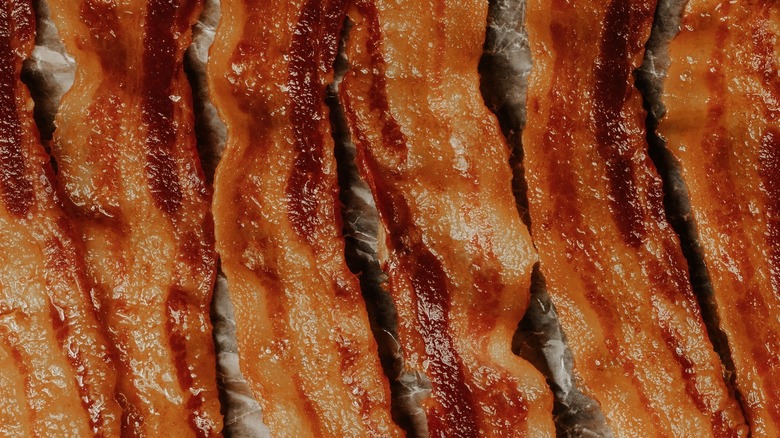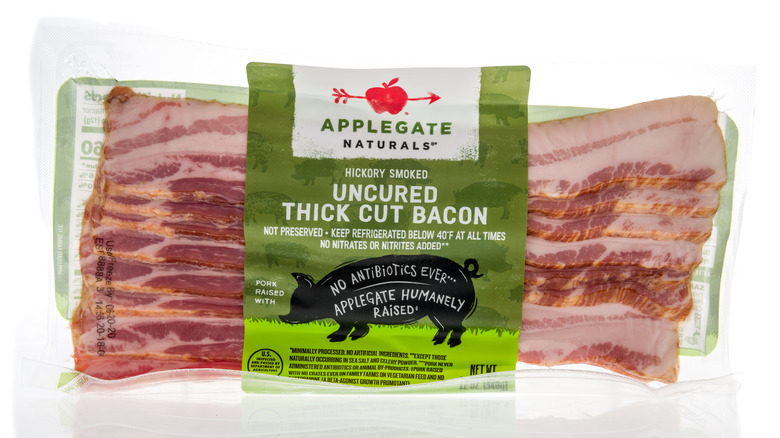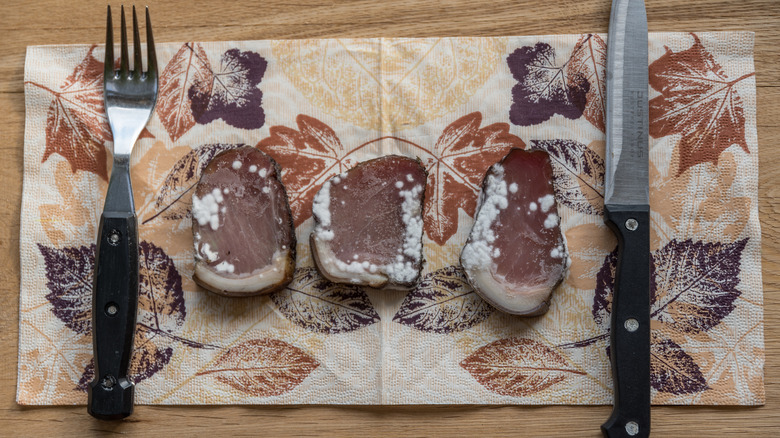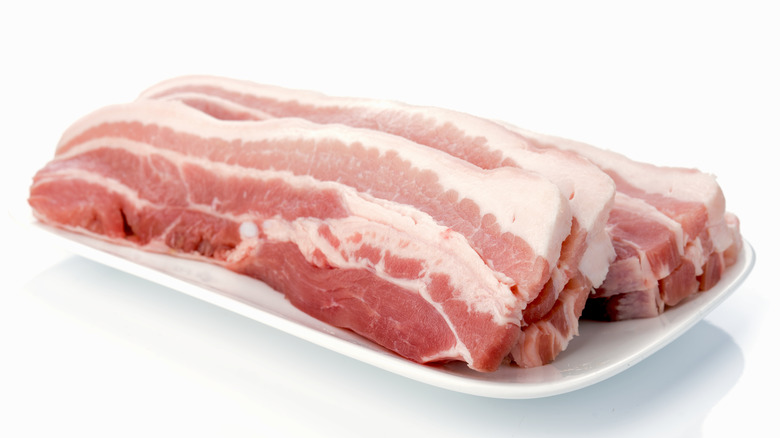How To Tell If Bacon Has Gone Bad
Bacon is one of those foods that has had a cult following forever. Recently, you may have even noticed that it's getting more popular and expensive, too. Aside from the heavenly, mouthwatering scent of Sunday morning breakfast that's often associated with freshly cooked bacon, its various flavors and textures make it tasty to eat as-is or. It also plays well as part of another dish, whether in a warm, creamy pasta or atop a hearty salad.
Though bacon is often well-sealed in its packaging and can usually be frozen to cook at a later date (not unlike steak), there are definitely some issues to watch out for if you've had it in your fridge for a while. According to Healthline, the shelf life of bacon depends a lot on proper storage both while raw and cooked. And if it's been longer than a week or two in some cases, simply frying it up probably won't help. The good news is that it's pretty easy to tell when your bacon has seen better days.
Check the expiration date
One of the best and most obvious ways of determining if bacon has gone bad is simply checking the package's expiration date. The USDA recommends immediately refrigerating bacon and storing it for no longer than a week. Save yourself some time at the store by checking the expiration date there. And if you happen to forget, a quick check at home will help you determine if you need to throw it away. The USDA suggests freezing bacon for up to four months if you don't plan to use it right away.
Street Smart Kitchen does note that meats are often labeled with suggested sell-by dates, which are not necessarily expiration dates. That said, sometimes bacon is still consumable even if the sell-by date has passed. When checking your bacon package, look for black printed text and numbers. This will usually show your estimated sell-by date. If going past that sell-by date still makes you nervous, luckily there are other ways to check if your bacon is spoiled.
Check for impurities and discoloration
Discoloration is one of the biggest signs of spoiled bacon that needs to go. Robust Kitchen notes that any spots of brown, gray, or even a green or blue tinge are all definite signs that your bacon has gone rancid and you should toss it right away. Additionally, small areas of mold — which can be white, black, or green — are also indicators that your bacon is no longer good.
Bacon should look pretty similar to how it looked when you purchased it at the store, meaning that it should be pink or red, bright, and with white or yellow streaks. If it looks like your bacon has gone dull in color, it's likely on its way out. It's also important that you examine the bacon under good lighting. After all, you don't want to take any risks with spoiled meat.
Check for smell
One of the biggest advantages we have is our sense of smell. Being able to smell foul odors has historically helped us to survive by avoiding pathogen-filled food. The same concept applies to checking your bacon. Per The Kitchen Community, your bacon should smell fresh, meaty, and slightly savory, salty, or even buttery. If you open your package of bacon and it smells sour or otherwise funky, take that as a sign to get rid of it. Any sort of fishy smell is also an indicator that your bacon has gone bad.
You don't have to inhale too much, either. Typically, any rancidity will make itself well known right away. However, if you're unsure if the smell is good or bad, always err on the side of caution and don't consume the bacon if there's a chance it is spoiled. Funky odors are typically related to bacterial growth, says Tufts University, so it's certainly not something you'll want to ingest.
Check the bacon's texture
Just like fruits and vegetables, meats can experience texture changes when they spoil. As you might check the firmness of an avocado by giving it a squeeze, feeling the texture of your bacon can also indicate if it's still safe to cook. According to Healthline, bacon that is safe to use should be soft and relatively moist. Take a single strip and feel it with your fingertip — you can even give it a soft squeeze. If the bacon at all feels slimy to the touch, it's not good to use.
As with the potential change in smell, a change in texture will be pretty easy to notice, says Robust Kitchen. While some of the texture will depend on the type of bacon, any evidence of sliminess is an immediate red flag. Rest assured that you will know once you evaluate bacon's texture — it's not a subtle change.




